Summertime has a lot going for it — warm weather, no jackets needed, and the opportunity to have fun outdoors. You don’t need to be a teacher to put together simple and easy science experiments for kids. One of the great things about summer is that kids just like to be outside spending time with you and blowing stuff up!
A lot of these science experiments use items like tape, construction paper, Ziploc bags, and cornstarch. Here are some household coupons if you need items like dish soap, sponges, and toilet paper too. Ready for simple summer science activities for kids?
Here are 22 easy science experiments for kids, from simple science experiments for kids to at home science experiments for kids, to fun science experiments.
22 Easy Science Experiments For Kids
1. Create a geyser using Mentos candy, diet soda, tape, and construction paper.

When you think of fun science experiments for kids, explosions (controlled, of course) are at the top of the list. For this experiment, adult supervision is needed for young kids. Essentially, you and your kids are going to quickly drop Mentos into a bottle of soda.

Roll about 7 Mentos candy pieces in a piece of paper, then drop all 7 at the same time into a 2-liter bottle of Diet Coke (since Diet Coke doesn’t have sugar, it’s easier to clean up), and watch the soda shoot up and out of the bottle.
A chemical reaction will occur, which causes the soda to shoot up with incredible force!
RELATED: Would You Rather Questions
2. Tell the temperature by counting cricket chirps in a 14-second period, then adding 40 to that number.

Did you know that you can tell the temperature by counting cricket chirps in a 14-second period, then adding 40 to that number?
It’s true! Since crickets are cold-blooded insects, their reaction time increases when it’s warm out and slows down when it’s cold — thus the difference in chirps. This is an easy, accurate, and fun educational activity for kids to teach them how to figure out the temperature in degrees Fahrenheit.
Since crickets come out in warm seasons, summer is the ideal time to perform this test.
3. Create art by filling a Ziploc bag with vinegar and crushed chalk to make an exploding paint bag.

When you think of effortless science activities for kids, there’s usually a Ziploc bag involved. For this experiment, head outside and place a poster board under a bag filled with about 1/3 cup of vinegar and 2 tablespoons of crushed chalk or powdered tempera paint. Quickly seal the bag, set it down, and watch it expand right before your eyes until it pops!

TIP: If the bag is not inflating, try adding baking soda to the crushed chalk.
4. Make magnetic slime by mixing glue, borax, and iron filings.
Kids ages 5 to 12 will love this experiment! If you don’t want to make your own slime, magnetic space putty works, too.
Here’s what you’ll need for this super fun science experiment for kids:
- Liquid starch
- White glue
- Iron oxide powder
- 1 neodymium magnet bar
For step-by-step directions, visit Frugal Fun for Boys and Girls.
5. Make a bottle “disappear” by putting it inside a clear glass container and filling both with glycerin.

In terms of easy science experiments for kids, not everything has to explode or morph into something else. This activity teaches basic science education. Follow these steps to show kids the physics of light traveling through glass and glycerin.
Here are the materials needed:
- 1 clear drinking glass
- 1 clear, empty glass bottle
- 2-3 6 oz. bottles of glycerin

They’ll be amazed when they can’t see the bottle’s boundaries within the glass container!
6. Bake snacks in a solar oven by gluing a piece of foil to construction paper and turning it into a cone.

Personally, any food-related science activity for kids is my jam! In this project, foil and black construction paper are the ovens that “cook” the food. This step-by-step guide suggests putting simple foods like cut-up apples into a pot and covering it with the cone.
Place it in the sun and wait a few hours for the food to cook. By absorbing the heat from the sun, the black construction paper reflects it around the food, therefore “cooking” it. Kids learn how the sun heats and cooks food and how to cook without electricity.
7. Have young kids practice “cooking” by making goop and flower cupcakes.
Ready to make flower cupcakes for a fun science experiment for kids? Of course, you can’t eat them, but they sure are fun to make and they encourage kids’ sensory skills and imagination.
Have your child gather fistfuls of grass and dandelion flowers and mix all the ingredients listed here together. They’ll see that their “cake” mix is an interesting concoction of solid and liquid. This activity is good for outside, sensory, and messy play.
Directions and additional information are available on The Imagination Tree.
8. Make sand waterproof with Scotchgard.

via The Geek Pub
Spend time outdoors making this project by gathering sand and laying it thinly on a foil-wrapped baking sheet. Then, liberally spray Scotchgard Protector onto the sand until it’s completely covered. Pour the sand into a clear container of water and impress the whole family with the formations you make.
9. Construct a rocket by placing an Alka-Seltzer tablet inside a film canister. Add some water and give it a shake.

via Science Sparks
For you old-school folks who still have 35mm film canisters, this experiment is a breeze. But, have no fear if you don’t have any. Empty Play-Doh containers or prescription bottles with non-childproof lids will do the trick.
To build the rocket, you’ll need a couple of plastic canisters and an Alka-Seltzer tablet.
The carbon dioxide buildup from the Alka-Seltzer tablet inside the canister increases the air pressure so much that when the canister can’t take any more, its lid will pop off and shoot up into the air.
This activity is for kids of all ages, but adult supervision is recommended for young children. Visuals for this easy science experiment for kids are found on the YouTube video on this page.
10. Create a rainbow in a jar by stacking common household liquids.

When I’m planning home science experiments for kids, I like to choose ones with items around the house, because it’s convenient. This project teaches kids two years and up about density. You’ll need a clear glass container, honey, light corn syrup, dish soap, olive oil, rubbing alcohol, water, and food coloring. Find out the steps and measurements on Playdough to Plato.
11. Use a pencil and clay to build a sundial for an easy science experiment for kids.
Think you don’t have time for a science activity for kids? Think again. Build a sundial by placing a pencil in a ball of clay. Every hour, mark the time with a stone. Doing this will teach young kids about the rotation of the sun and how to tell time.
12. Discover molecules by sealing a Ziploc bag full of water and pushing sharp pencils through both sides.
My 7-year-old son actually tried this experiment after finding it on TikTok. I was amazed that it worked!
Zip top bags are made of polymer, the chain of molecules that’s flexible. When you poke a sharp object — like a pencil — through the bag, those molecules prevent water from coming out. Try using many pencils!
Find Ziploc coupons here if you need more for other educational activities for kids.
13. Combine cornstarch and water as an easy science activity for kids to make quicksand.
You don’t need to be near a riverbank to fall into this science experiment. Make quicksand in the backyard. Mix a cup of cornstarch and a half a cup of water. This medley of ingredients teaches kids how some materials act like a solid, while other times, they can be liquid. It can get messy, so we recommend taking it outside.
RELATED: Free Things to Do with Your Kids This Summer
14. Create a colorful educational activity for kids with water, salt, and food coloring.

via Artful Parent
Have food coloring handy to drop over the ice so you can highlight the ravines, crevasses, and tunnels that form as the salt melts the ice away. This is an easy and simple science experiment for kids of all ages.
Here are the materials needed:
Additional photos and instructions are available at The Artful Parent.
15. Cause an egg’s hard shell to disappear by placing it in a cup of white vinegar for a few days.

This simple science experiment for kids (as young as 4) teaches them about osmosis and the science of molecules passing through a seemingly solid membrane. If you’re holding the egg’s rubbery membrane afterwards, just be careful — you don’t want it to burst into a runny mess!
16. Form giant bubbles with glycerin for a cool science experiment for kids.

No summer science experiment is complete without bubbles.
Here’s what you need for this concoction:
- 6 C. water
- 1/2 C. Dawn
- 1/2 C. cornstarch
- 1 T. baking powder
- 1 T. glycerin
Mix the ingredients together to form a solution, then use a homemade bubble wand made from yard and wooden dowels to impress kiddos with giant bubbles. Blowing bubbles is fun for everyone and teaches kids about concepts like elasticity, chemistry, light, and even geometry.
17. Make rain clouds with water, shaving cream, and a few drops of food coloring.

This project shows young kids how rain clouds and precipitation work.
Here’s what you need:
- Clear container (like a mason jar)
- Water
- Shaving cream
- Blue food coloring
Directions
- Fill your container ¾ of the way with water.
- Carefully add shaving cream so it looks like a cloud. Let it set for a few minutes.
- Mix ¼ cup water and a few drops of food coloring.
- Use an eye dropper to create the “rain” by squeezing the food coloring over the shaving cream until it resembles a cloud.
Not only is this simple and creative, but it’s not too messy. Just the kind of educational activity for kids that adults like.
18. Inflate a balloon by filling it with Pop Rocks and attaching it to a bottle of soda.

This fun and simple science experiment for kids educates them on chemical reactions and gasses. Just gather a few plastic bottles of carbonated drinks, balloons, and Pop Rocks candy (or a generic popping candy from Dollar Tree). Adult supervision is required.

19. Build a DIY science experiment for kids with worms, dirt, and sand.
If you didn’t appreciate worms before, you’ll appreciate them after this experiment. Learn the value of worms, which help create the dark brown soil packed full of the nutrients needed for plant growth. See how this mom built her kids a worm observation hotel.
20. Construct an outdoor, erupting volcano by burying a water bottle filled with baking soda and adding vinegar.

This is a classic science activity for kids that explains how baking soda and vinegar together create carbon dioxide. To get started on this outdoor volcano experiment, gather a water bottle, white vinegar, baking soda, red food coloring, and dirt (or sand).

Directions
- Fill an empty water bottle ½ full with baking soda (use a funnel) and a few drops of red food coloring.
- In another cup, add ½ cup of vinegar. Set it aside.
- Place the cap on the water bottle, then “bury” it in dirt or sand with some clearance at the top of the bottle (for the explosion).
- Open the bottle cap and slowly pour the vinegar in. Be sure to stand back!
TIP: You may have to add more vinegar to create an eruption.
21. Discover osmosis by placing white flowers in colored water overnight to see the stems and leaves change color.

Transpiration is the process of water movement in a plant. Even though this cool science experiment for kids is designed for preschool and elementary-aged kiddos, you’ll be amazed to see transpiration in the works as an adult!
You’ll need white flowers, glasses, and food coloring. Determine how many colors you’d like to experiment with, and fill each glass with water and food coloring. Cut the stem of each flower at an angle to allow your flowers to “drink up” as much water as possible. Set one flower in each glass and wait!
22. Create an easy science experiment for kids — a tornado in a jar.
Form a tornado by adding water, dish soap, and glitter to a jar and giving it a little shake. Have a tight lid ready to go, and wow the kids using these instructions.

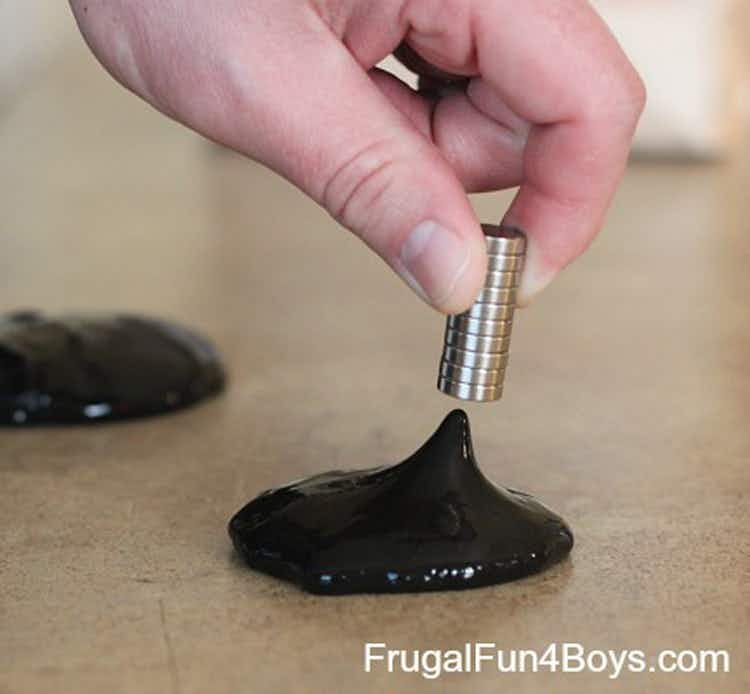
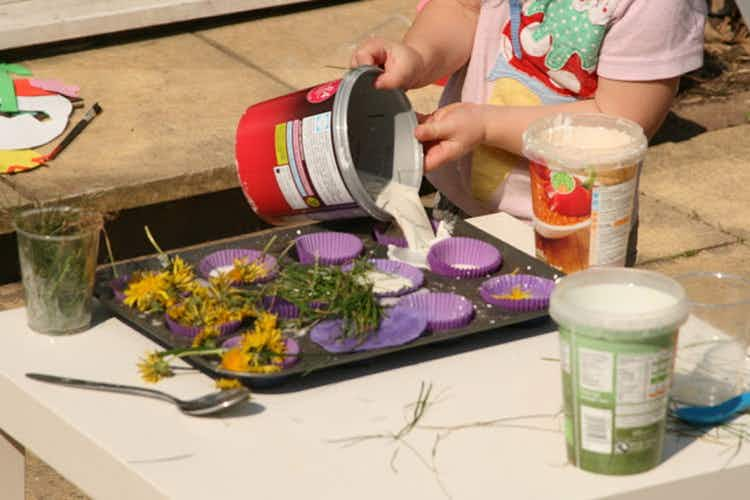

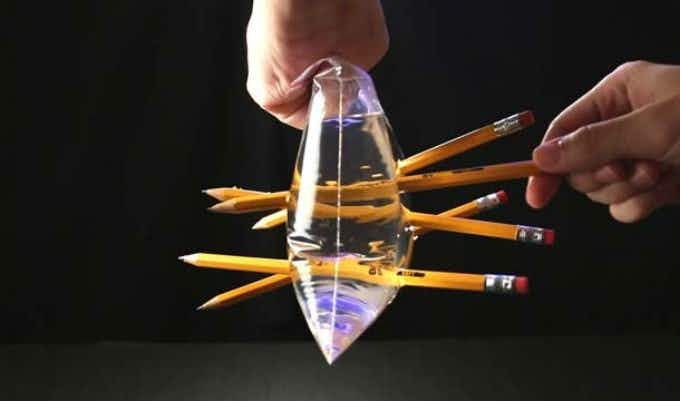
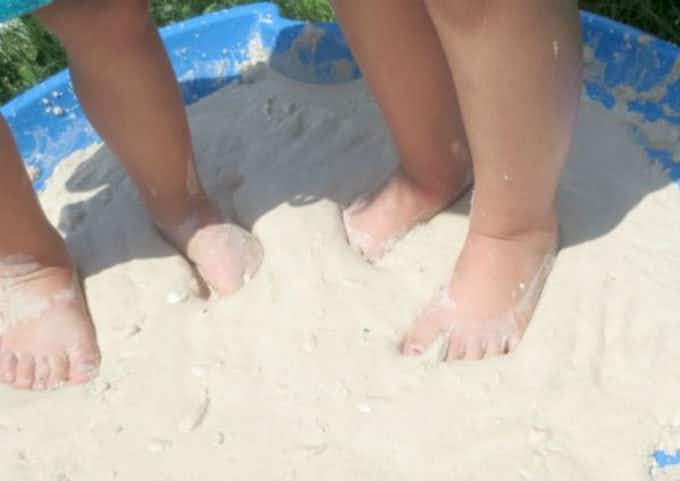
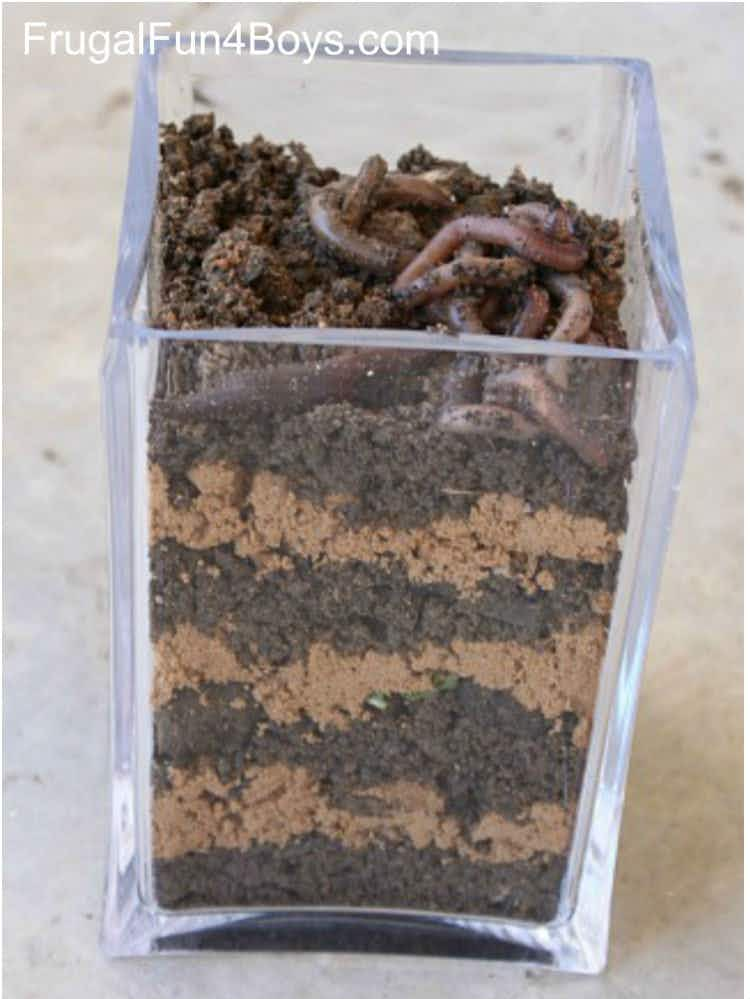
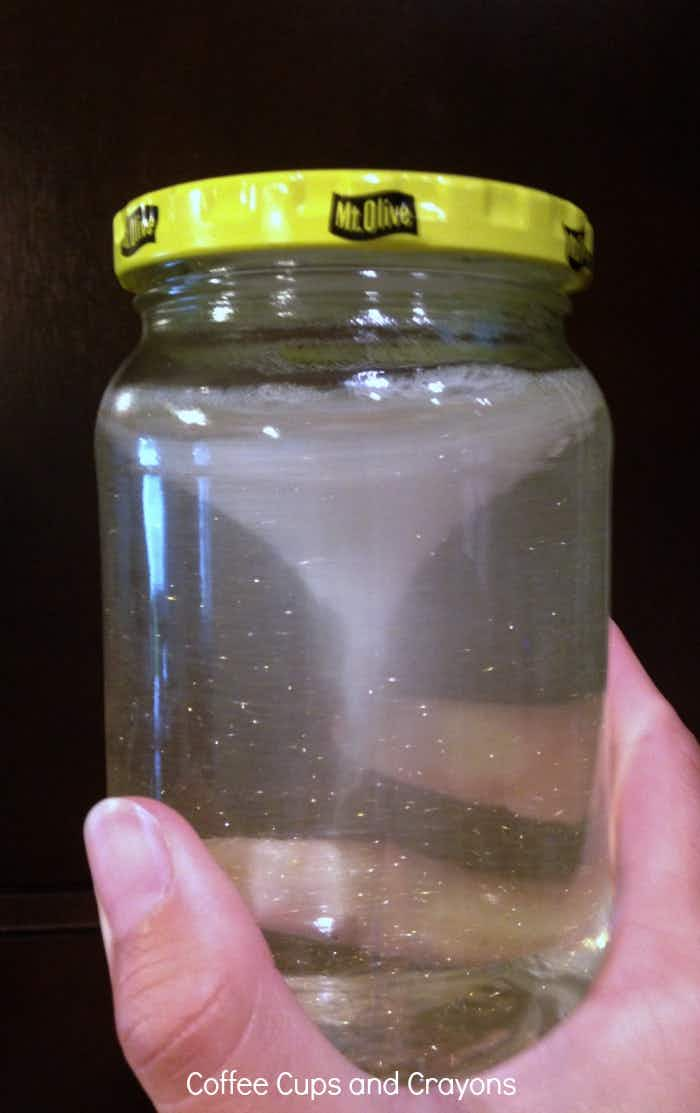











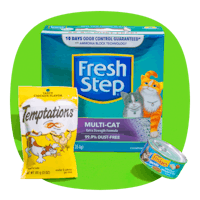

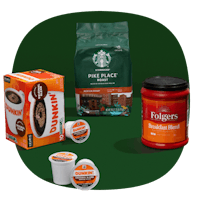
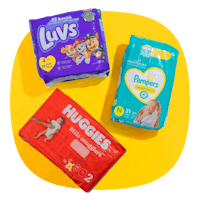
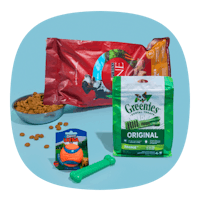
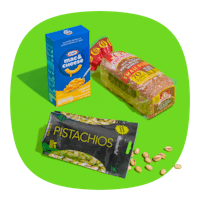
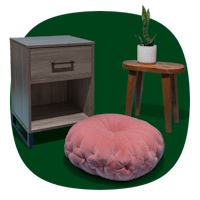
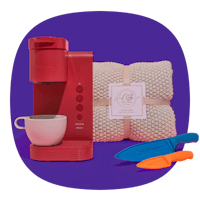
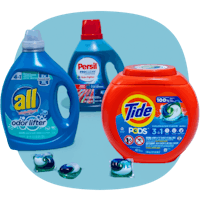





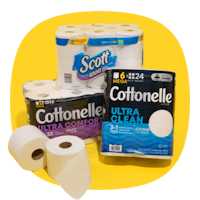
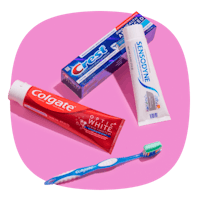
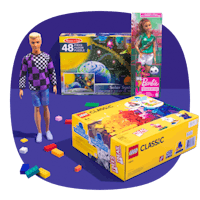



Tell us what you think